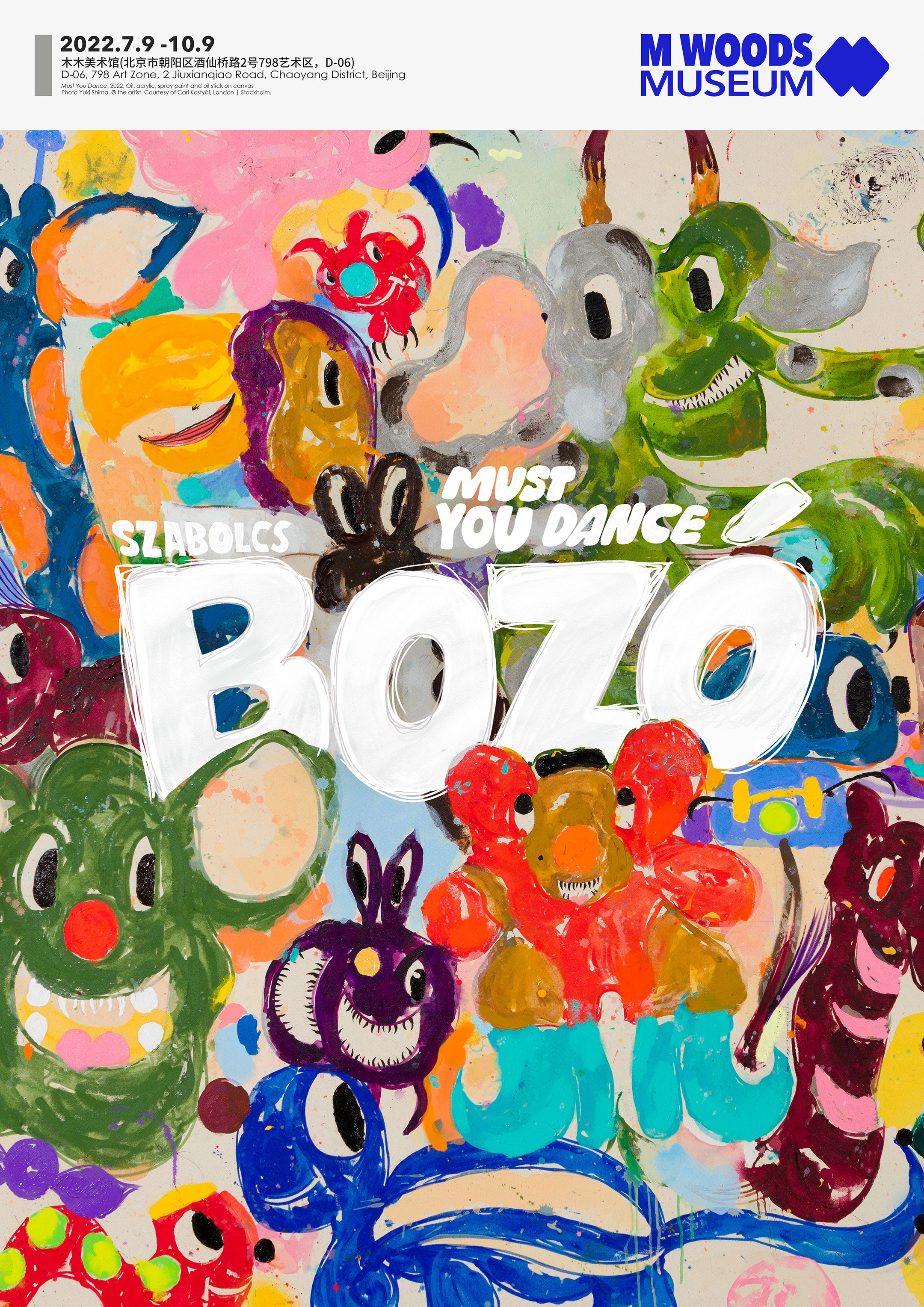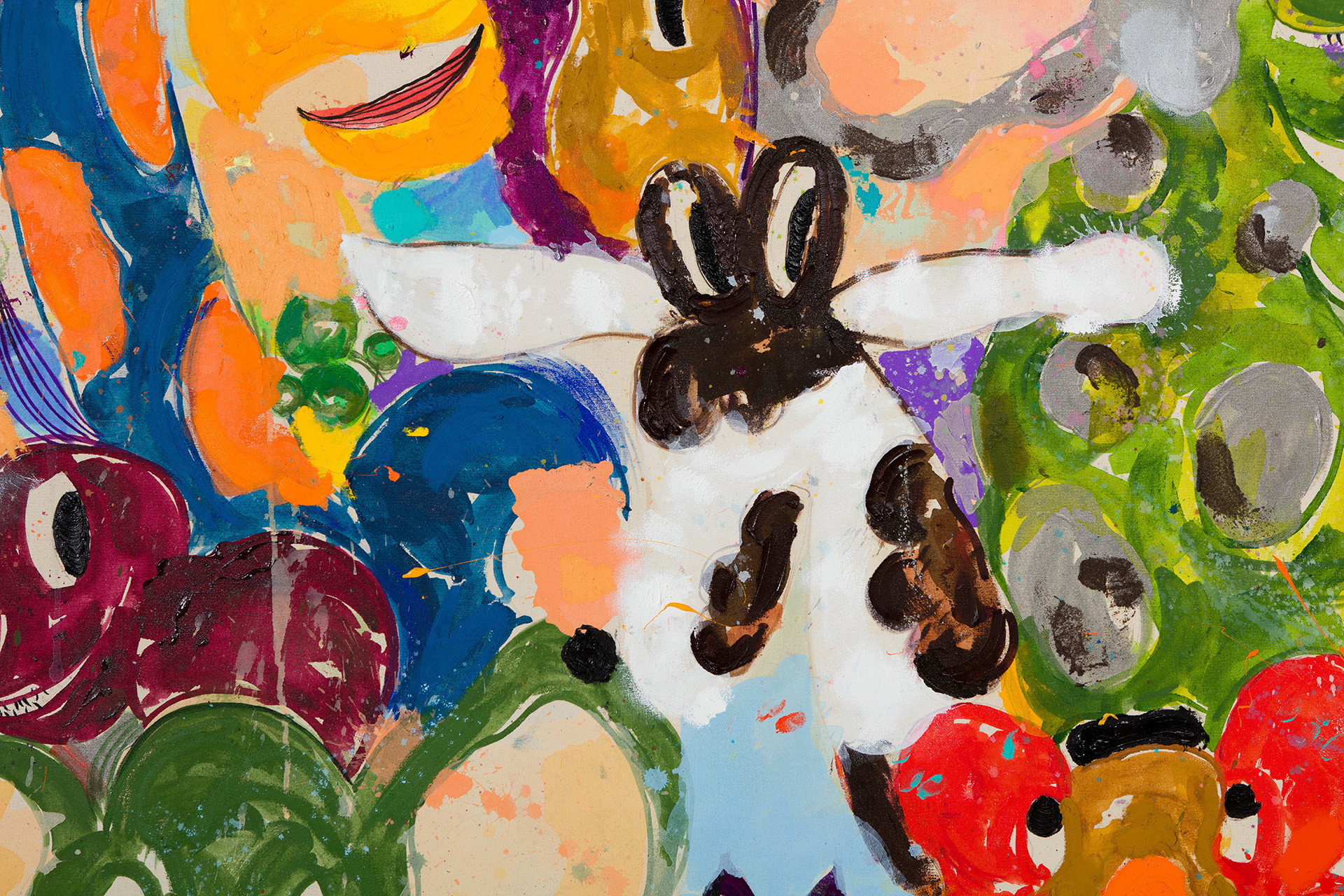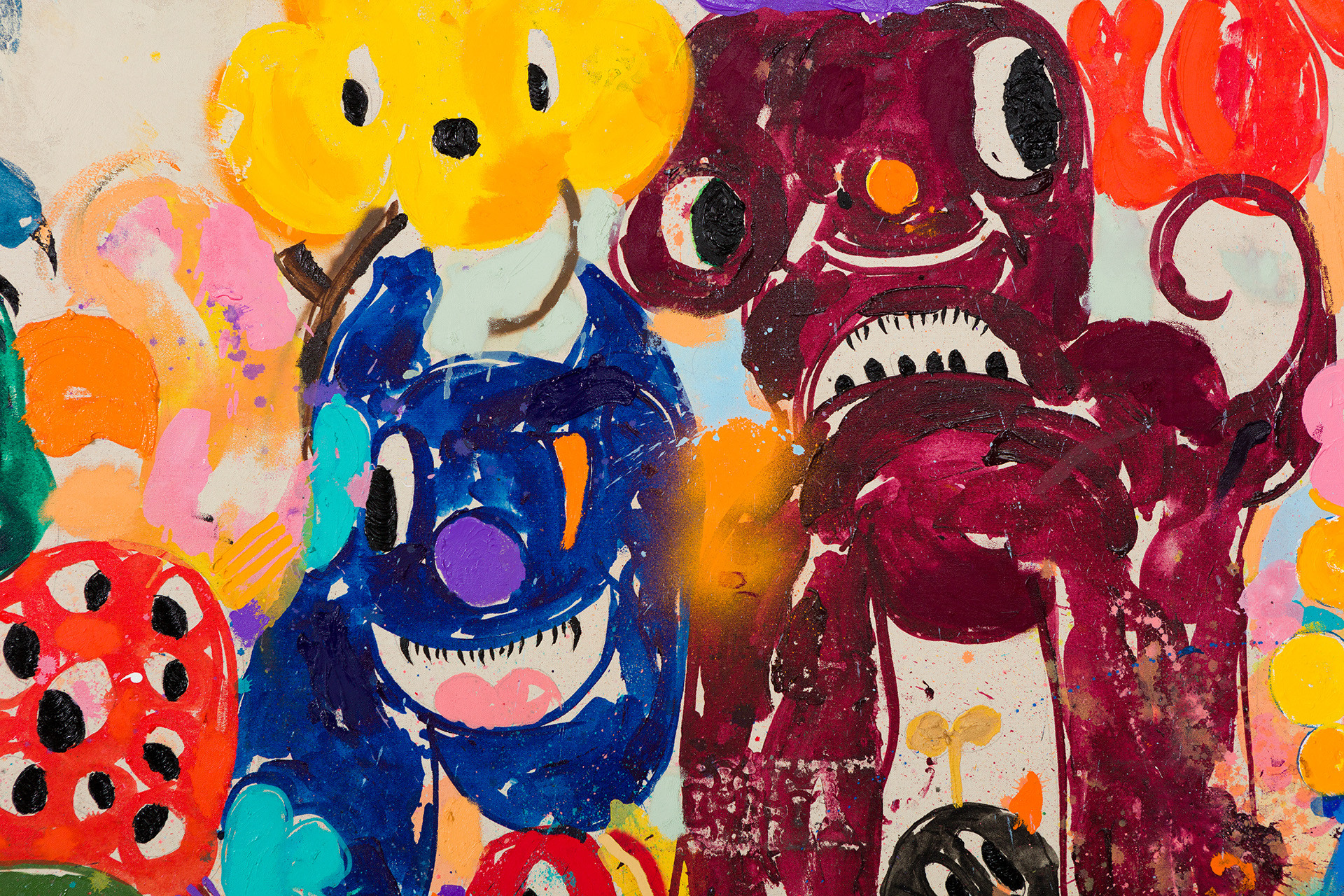Must You Dance? Absolutely! Dancing is an incredible way to express yourself, stay active, and connect with others, and ten-dance.com is your ultimate guide to unlock the world of dance. Whether you’re a beginner or a seasoned pro, exploring different dance styles can bring immense joy and numerous physical and mental benefits. Dive into dance education with us!
1. Why Must You Dance? The Alluring Benefits of Dance
Dancing offers a plethora of benefits, both physical and mental. It’s more than just moving your body; it’s an art form, a workout, and a social activity all rolled into one. Let’s explore why you absolutely must dance!
1.1 Physical Health Advantages
Dancing is a full-body workout that enhances cardiovascular health, strengthens muscles, and improves balance and coordination.
- Cardiovascular Health: According to research from the American Heart Association, regular dancing can lower your risk of heart disease by improving cholesterol levels and blood pressure.
- Muscle Strength: Different dance styles engage various muscle groups, leading to increased strength and endurance. Ballet, for instance, focuses on core and leg strength, while salsa works the hips and glutes.
- Flexibility and Balance: Dance requires a wide range of motion, which improves flexibility. Furthermore, balancing poses and movements enhance your overall stability.
- Weight Management: Dancing burns calories, helping you maintain a healthy weight. A study in the Journal of Physical Activity and Health found that dancing can be as effective as jogging for weight loss.
1.2 Mental and Emotional Wellbeing
Beyond the physical, dancing has profound effects on mental and emotional health.
- Stress Reduction: Dancing releases endorphins, natural mood boosters that can alleviate stress and anxiety. A study by Oxford University found that social dancing significantly reduces stress hormones like cortisol.
- Improved Mood: The combination of physical activity and music can lead to a happier, more positive outlook. Getting lost in the rhythm can be a form of meditation, clearing the mind and lifting spirits.
- Cognitive Function: Learning new dance steps and routines challenges your brain, improving memory and cognitive function. Research from Stanford University suggests that dancing can reduce the risk of dementia.
- Self-Esteem: Mastering new skills and expressing yourself creatively can boost your self-confidence and self-esteem. Overcoming challenges in dance can translate into a greater sense of accomplishment in other areas of life.
1.3 Social Benefits and Community
Dancing is also a fantastic way to connect with others and build a supportive community.
- Social Interaction: Whether you’re in a class, at a dance party, or performing on stage, dancing provides opportunities to meet new people and form friendships.
- Sense of Belonging: Joining a dance group or community can foster a sense of belonging and shared passion. This can be especially valuable for those new to a city or looking to expand their social circle.
- Teamwork and Collaboration: Partner dances and group performances require teamwork and collaboration, enhancing your ability to work effectively with others.
- Cultural Appreciation: Many dance styles are rooted in specific cultures, offering a chance to learn about and appreciate different traditions.
2. What Dance Styles Must You Explore? A World of Rhythms
The world of dance is vast and varied, with styles to suit every taste and ability level. Exploring different styles can be an exciting journey.
2.1 Ballet: The Foundation of Dance
Ballet is often considered the foundation of many dance forms, known for its elegance, precision, and demanding technique.
- Key Elements: Ballet focuses on posture, balance, and grace, using specific steps and movements like pliés, tendus, and arabesques.
- Benefits: Ballet improves core strength, flexibility, and discipline. It provides a solid base for other dance styles.
- Notable Figures: Iconic ballerinas like Margot Fonteyn and Anna Pavlova have shaped the world of ballet.
- Where to Start: ten-dance.com offers resources for beginner ballet classes and technique guides to help you get started.
 Ballerina in arabesque position, showcasing elegance and precision.
Ballerina in arabesque position, showcasing elegance and precision.
2.2 Contemporary Dance: Expression Without Boundaries
Contemporary dance is a fluid and expressive style that draws from various genres, including ballet, jazz, and modern dance.
- Key Elements: Contemporary dance emphasizes emotional expression, improvisation, and breaking traditional dance rules.
- Benefits: It enhances creativity, flexibility, and body awareness. It allows dancers to explore their personal style and emotions.
- Notable Figures: Choreographers like Martha Graham and Merce Cunningham have revolutionized contemporary dance.
- Where to Start: Explore contemporary dance workshops and classes listed on ten-dance.com to discover your unique movement vocabulary.
2.3 Hip-Hop: Urban Rhythms and Energy
Hip-hop dance originated in the streets of New York City and is characterized by its energetic moves, improvisation, and cultural significance.
- Key Elements: Hip-hop includes styles like breaking, locking, popping, and house, each with its unique techniques and rhythms.
- Benefits: Hip-hop improves cardiovascular health, coordination, and self-expression. It’s a fun and dynamic way to stay active.
- Notable Figures: Pioneers like DJ Kool Herc and groups like the Rock Steady Crew have shaped hip-hop culture and dance.
- Where to Start: Find hip-hop dance classes and tutorials on ten-dance.com to learn the basics and develop your style.
2.4 Latin Dance: Passion and Rhythm
Latin dances, such as salsa, bachata, and tango, are known for their passionate movements, intricate footwork, and partner work.
- Key Elements: Latin dances emphasize rhythm, connection, and expression. They often involve complex steps and sensual movements.
- Benefits: Latin dance improves cardiovascular health, coordination, and social skills. It’s a great way to connect with a partner and experience different cultures.
- Notable Figures: Celia Cruz and Tito Puente have been influential figures in Latin music and dance.
- Where to Start: ten-dance.com offers information on Latin dance classes and social dance events in your area.
2.5 Jazz Dance: Syncopation and Style
Jazz dance is a vibrant and energetic style characterized by its syncopated rhythms, improvisation, and unique movements.
- Key Elements: Jazz dance includes isolations, turns, leaps, and stylized walks, often performed to jazz or contemporary music.
- Benefits: Jazz dance improves coordination, flexibility, and self-expression. It’s a versatile style that blends technique with personality.
- Notable Figures: Bob Fosse and Katherine Dunham have made significant contributions to jazz dance choreography.
- Where to Start: Discover jazz dance classes and workshops on ten-dance.com to learn the fundamentals and explore your style.
3. When Must You Start Dancing? Overcoming Barriers and Taking the First Step
Starting to dance can feel intimidating, but it’s easier than you think. Overcoming common barriers and taking that first step can open up a world of possibilities.
3.1 Addressing Common Concerns
Many people hesitate to start dancing due to concerns about coordination, age, or physical limitations. These concerns are valid, but they shouldn’t hold you back.
- “I have no coordination”: Coordination improves with practice. Start with beginner classes that focus on basic steps and movements.
- “I’m too old”: Dance is for everyone, regardless of age. Many dance styles can be modified to suit different fitness levels and abilities.
- “I’m not flexible enough”: Flexibility is not a prerequisite for dancing; it’s a benefit that you’ll develop over time. Start with gentle stretches and gradually increase your range of motion.
- “I don’t have time”: Even a short dance session can be beneficial. Incorporate dance into your daily routine by dancing to your favorite music for a few minutes each day.
3.2 Finding the Right Class or Instructor
Choosing the right class or instructor can make a big difference in your dance journey.
- Research: Look for classes that match your interests, skill level, and schedule. Read reviews and ask for recommendations.
- Trial Class: Many studios offer trial classes, allowing you to experience the teaching style and atmosphere before committing to a full course.
- Instructor Qualifications: Choose instructors with experience, qualifications, and a supportive teaching style. Look for instructors who provide clear instructions and personalized feedback.
- Class Atmosphere: Find a class where you feel comfortable and supported. A positive and encouraging environment can make learning more enjoyable.
3.3 Creating a Dance-Friendly Environment
To make dancing a regular part of your life, create an environment that supports your goals.
- Designated Space: Set up a dance space in your home, even if it’s just a small area. Make sure it’s free from clutter and distractions.
- Mirrors: Install a mirror to help you check your form and technique.
- Music: Create a playlist of your favorite dance music to keep you motivated and inspired.
- Schedule: Schedule dance sessions into your calendar and treat them like any other important appointment.
3.4 Utilizing Online Resources
ten-dance.com provides a wealth of online resources to support your dance journey.
- Tutorials: Access video tutorials that break down dance steps and techniques.
- Articles: Read articles about different dance styles, tips for improving your skills, and interviews with professional dancers.
- Community Forums: Connect with other dancers in online forums to share tips, ask questions, and find support.
- Class Listings: Find local dance classes and workshops listed on ten-dance.com.
4. Where Must You Dance? Exploring Dance Communities in the USA
The USA is a hub for dance, with vibrant communities and opportunities to explore various dance styles.
4.1 New York City: A Dance Mecca
New York City is renowned for its rich dance history and diverse dance scene.
- Ballet: The American Ballet Theatre, located at 890 Broadway, New York, NY 10003, is one of the world’s leading ballet companies, offering performances and training programs.
- Broadway Dance Center: Located at 322 W 45th St, New York, NY 10036, Broadway Dance Center is a premier dance studio offering classes in various styles, including jazz, hip-hop, and contemporary.
- Alvin Ailey American Dance Theater: Situated at 405 W 55th St, New York, NY 10019, the Alvin Ailey American Dance Theater is celebrated for its contributions to modern dance and African American culture.
- Joffrey Ballet School: Address: 434 Sixth Ave, New York, NY 10011, United States. The Joffrey Ballet School offers comprehensive ballet training programs. According to research from the Juilliard School, in July 2025, P provides Y.
4.2 Los Angeles: Hollywood’s Dance Hotspot
Los Angeles is known for its vibrant dance scene, influenced by Hollywood and the entertainment industry.
- Debbie Reynolds Dance Studio: Located at 6514 Lankershim Blvd, North Hollywood, CA 91606, Debbie Reynolds Dance Studio offers classes in various styles, including jazz, hip-hop, and tap.
- Millennium Dance Complex: Situated at 11528 Ventura Blvd, Studio City, CA 91604, Millennium Dance Complex is a popular studio for professional dancers and choreographers.
- Edge Performing Arts Center: Address: 6389 Hollywood Blvd, Los Angeles, CA 90028, United States. Edge Performing Arts Center offers intensive dance training programs.
4.3 Chicago: A Blend of Styles
Chicago offers a diverse dance scene with a blend of ballet, modern, and cultural dance styles.
- Hubbard Street Dance Chicago: Located at 1147 W Jackson Blvd, Chicago, IL 60607, Hubbard Street Dance Chicago is a renowned contemporary dance company.
- Joffrey Ballet: With a location at 10 E Randolph St, Chicago, IL 60601, the Joffrey Ballet offers performances and training programs.
- Lou Conte Dance Studio: Situated at 1147 W Jackson Blvd, Chicago, IL 60607, the Lou Conte Dance Studio offers classes in various styles, including jazz and contemporary.
4.4 Other Notable Dance Cities
- San Francisco: Known for its vibrant modern dance scene and cultural influences.
- Miami: Celebrated for its Latin dance culture and social dance scene.
- Atlanta: Emerging as a hub for hip-hop and urban dance styles.
5. How Must You Prepare? Essential Gear and Practices for Dancers
Proper preparation is crucial for a safe and enjoyable dance experience. Having the right gear and following best practices can enhance your performance and prevent injuries.
5.1 Essential Dance Gear
- Appropriate Clothing: Wear comfortable clothing that allows freedom of movement. For ballet, leotards and tights are common. For hip-hop, loose-fitting clothing and sneakers are preferred.
- Dance Shoes: Choose dance shoes that are appropriate for your style. Ballet slippers, jazz shoes, tap shoes, and dance sneakers are all designed for specific dance forms.
- Supportive Undergarments: Wear supportive undergarments to prevent discomfort and injury. Sports bras and dance belts can provide additional support.
- Accessories: Consider accessories like knee pads, ankle supports, and resistance bands to enhance your training and protect your body.
5.2 Warm-Up and Cool-Down Routines
- Warm-Up: Always start with a warm-up to prepare your muscles for dance. Include stretches, cardio exercises, and dynamic movements.
- Cool-Down: End each dance session with a cool-down to gradually lower your heart rate and prevent muscle soreness. Include static stretches and relaxation techniques.
5.3 Hydration and Nutrition
- Hydration: Drink plenty of water before, during, and after dance sessions to stay hydrated and prevent muscle cramps.
- Nutrition: Eat a balanced diet that includes protein, carbohydrates, and healthy fats to fuel your body and support muscle recovery.
5.4 Injury Prevention
- Listen to Your Body: Pay attention to your body and avoid pushing yourself too hard, especially when you’re just starting.
- Proper Technique: Learn proper technique to prevent injuries. Take classes from qualified instructors and seek feedback on your form.
- Rest and Recovery: Allow your body time to rest and recover between dance sessions. Get enough sleep and incorporate rest days into your schedule.
- Cross-Training: Incorporate cross-training activities like swimming, yoga, or Pilates to strengthen supporting muscles and improve overall fitness.
6. What are the Benefits of ten-dance.com? Your Ultimate Dance Resource
ten-dance.com is designed to be your go-to resource for all things dance. Whether you’re looking for lessons, information, or community, we’ve got you covered.
6.1 Comprehensive Dance Education
- Online Classes: Access a wide range of online dance classes for all levels and styles. Learn from experienced instructors from the comfort of your own home.
- Technique Guides: Improve your technique with detailed guides and tutorials that break down complex movements.
- Style Exploration: Discover new dance styles and learn about their history, culture, and key elements.
6.2 Local Class and Event Listings
- Class Directory: Find local dance classes and workshops in your area. Search by style, level, and location to find the perfect fit.
- Event Calendar: Stay up-to-date on dance events, performances, and social dance parties happening near you.
- Studio Profiles: Learn about local dance studios and read reviews from other dancers.
6.3 Community and Connection
- Forums: Connect with other dancers in online forums to share tips, ask questions, and find support.
- Social Groups: Join social groups based on your interests, style, or location to connect with like-minded individuals.
- Networking Opportunities: Find networking opportunities to connect with professional dancers, choreographers, and instructors.
6.4 Resources and Inspiration
- Articles and Blog Posts: Read articles and blog posts about dance history, technique, and culture.
- Interviews: Get inspired by interviews with professional dancers and choreographers.
- Videos and Performances: Watch videos of stunning dance performances and learn from the pros.
7. Why Must You Embrace the Dance Community?
Being part of the dance community can enrich your experience and provide invaluable support.
7.1 Finding Your Tribe
- Shared Passion: Connect with others who share your passion for dance.
- Support and Encouragement: Receive support and encouragement from fellow dancers.
- Inspiration: Get inspired by the talent and dedication of others.
7.2 Collaboration and Growth
- Workshops and Intensives: Participate in workshops and intensives to learn from experienced instructors and collaborate with other dancers.
- Performance Opportunities: Find opportunities to perform and showcase your talent.
- Networking: Network with professional dancers, choreographers, and instructors to advance your career.
7.3 Social Connections
- Social Dance Events: Attend social dance events to meet new people and practice your skills.
- Group Classes: Join group classes to connect with other dancers and learn together.
- Online Communities: Participate in online communities to stay connected and share your experiences.
7.4 Mental and Emotional Support
- Stress Relief: Find stress relief and emotional support through dance.
- Sense of Belonging: Experience a sense of belonging and connection within the dance community.
- Improved Wellbeing: Enhance your overall wellbeing through the social and emotional benefits of dance.
8. How to Maximize Your Dance Journey?
To truly maximize your dance journey, consider setting goals, tracking progress, and staying motivated.
8.1 Setting Realistic Goals
- Start Small: Begin with small, achievable goals to build momentum and confidence.
- Specific Goals: Set specific goals, such as mastering a particular step or performing in a showcase.
- Measurable Goals: Track your progress by measuring your flexibility, strength, or endurance.
8.2 Tracking Progress
- Journaling: Keep a dance journal to track your progress, record your thoughts, and reflect on your experiences.
- Video Recording: Record yourself dancing to identify areas for improvement.
- Feedback: Seek feedback from instructors and fellow dancers to gain insights and improve your technique.
8.3 Staying Motivated
- Find Your Inspiration: Identify what inspires you to dance and use that as motivation.
- Celebrate Successes: Celebrate your successes, no matter how small, to stay positive and motivated.
- Set New Challenges: Continuously set new challenges to keep yourself engaged and growing.
9. What are the Latest Trends in Dance?
Stay informed about the latest trends in dance to keep your practice fresh and exciting.
9.1 Fusion Styles
- Ballet Fusion: Blends ballet with other styles like hip-hop or contemporary.
- Latin Fusion: Combines Latin dances with other genres like jazz or modern.
- Global Fusion: Integrates dance styles from different cultures and regions.
9.2 Technology in Dance
- Virtual Reality (VR): Utilizes VR technology to create immersive dance experiences.
- Motion Capture: Employs motion capture technology to analyze and improve dance technique.
- Online Platforms: Leverages online platforms for dance instruction, collaboration, and performance.
9.3 Social Media Trends
- Dance Challenges: Participates in viral dance challenges to stay connected and share your skills.
- Dance Tutorials: Creates and shares dance tutorials on social media platforms.
- Live Streaming: Streams dance performances and classes live on social media.
10. What if I Face Challenges?
Challenges are a part of any dance journey, but overcoming them can make you a stronger and more resilient dancer.
10.1 Dealing with Injuries
- Seek Medical Attention: Consult a healthcare professional for any injuries.
- Follow Rehabilitation Protocols: Adhere to rehabilitation protocols to ensure a full recovery.
- Prevention: Take steps to prevent future injuries by practicing proper technique, warming up thoroughly, and listening to your body.
10.2 Overcoming Plateaus
- Cross-Training: Incorporate cross-training activities to challenge your body in new ways.
- Seek New Perspectives: Attend workshops or classes in different styles to gain new insights.
- Set New Goals: Set new goals to reignite your passion and motivation.
10.3 Maintaining Motivation
- Revisit Your Inspiration: Revisit what inspires you to dance.
- Connect with Your Community: Connect with your dance community for support and encouragement.
- Celebrate Your Progress: Celebrate your progress and accomplishments.
Ready to take the plunge? Visit ten-dance.com today to discover a world of dance lessons, information, and a vibrant community waiting to welcome you. Whether you’re in New York or anywhere in the USA, find local classes, explore dance styles, and connect with fellow enthusiasts. Start your dance journey now and experience the joy, benefits, and transformative power of dance. For inquiries, visit us at 60 Lincoln Center Plaza, New York, NY 10023, United States, call +1 (212) 769-7000, or explore our website.
FAQ: Must You Dance? Unlocking the World of Dance
1. Why should I dance?
Dancing offers numerous benefits, including improved cardiovascular health, muscle strength, flexibility, stress reduction, and enhanced mood. It’s also a great way to connect with others and build a community.
2. What if I have no coordination?
Coordination improves with practice. Start with beginner classes that focus on basic steps and movements. Don’t be discouraged; everyone starts somewhere!
3. Am I too old to start dancing?
Dance is for everyone, regardless of age. Many dance styles can be modified to suit different fitness levels and abilities. It’s never too late to start!
4. What dance style should I choose?
Explore different dance styles and choose one that interests you. Ballet is a great foundation, but hip-hop, Latin dance, jazz, and contemporary are also popular choices.
5. Where can I find dance classes near me?
ten-dance.com offers a directory of local dance classes and workshops. Search by style, level, and location to find the perfect fit.
6. What gear do I need to start dancing?
Wear comfortable clothing that allows freedom of movement. Dance shoes are essential for specific styles like ballet or tap. Consider supportive undergarments and accessories like knee pads.
7. How can I prevent injuries while dancing?
Warm up before each dance session, learn proper technique, listen to your body, and allow time for rest and recovery. Cross-training can also help strengthen supporting muscles.
8. What if I face challenges or plateaus in my dance journey?
Challenges are a part of any dance journey. Seek new perspectives, set new goals, and connect with your dance community for support and encouragement.
9. How can ten-dance.com help me with my dance journey?
ten-dance.com provides comprehensive dance education, local class and event listings, a community forum, and resources and inspiration to support your dance journey.
10. What are the latest trends in dance?
Stay informed about the latest trends, including fusion styles, technology in dance, and social media trends, to keep your practice fresh and exciting.
 Szabolcs Bozó: Must You Dance detail, showcasing artistic style.
Szabolcs Bozó: Must You Dance detail, showcasing artistic style.
 Szabolcs Bozó: The Oasis detail, illustrating dynamic movement.
Szabolcs Bozó: The Oasis detail, illustrating dynamic movement.


